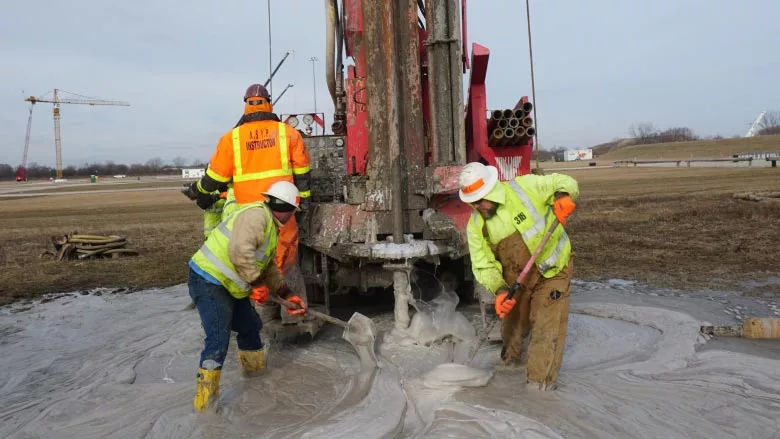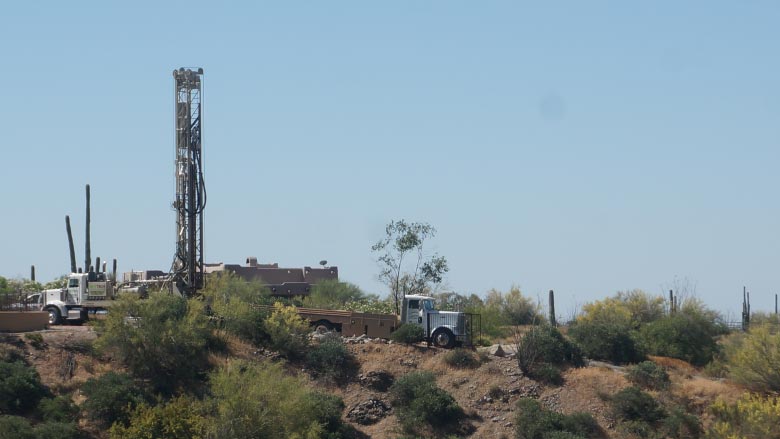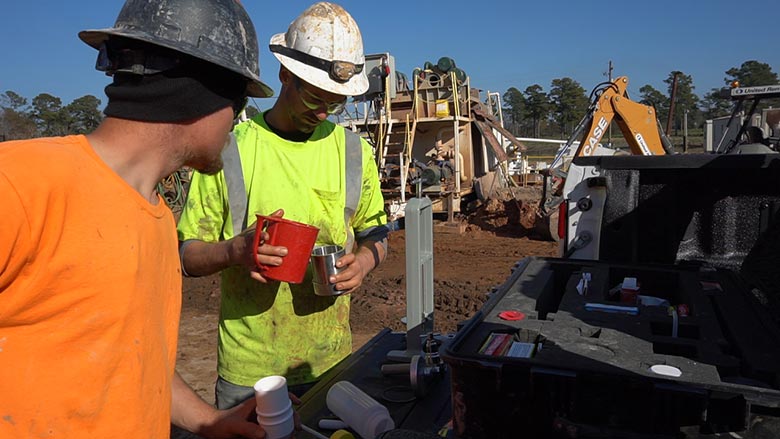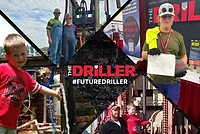Making Trades Like Drilling Competitive for Younger Workers
Grants Help, but Drilling Companies Need Focus, Mindset Change

The industry has for years blamed poor retention on the idea that people don’t want to work hard or get dirty, but is it necessarily true?
Source: Brock Yordy
The Departments of Energy and Agriculture have grants and tax incentives available for companies to use on workforce development programs. These funds, intended to help build a new generation of employees, target industries like farming, water infrastructure, clean energy and, yes, drilling. However, in a universe of 166 million working Americans, the agriculture and trades sectors face a lopsided playing field. Of all working Americans just 12% work in agriculture and a little under 5% make a living in the construction industry. Drilling employment — groundwater, geothermal, geotechnical, etc. — makes up a small fraction of that small fraction, despite its importance.
As an industry, we know that drilling progresses civilization. Drilling is essential to clean energy, from the lithium in our EV batteries to geothermal HVAC. Demand is strong. Still, we haven’t yet recognized that our workforce development culture and processes have inhibited the growth of our trade. Think about this statistic when you wake up each day and make it the last thing that leaves your mind while falling asleep:
The average age of the drilling industry is 58 years old and 45% of those individuals will be retired by 2030.

So much of modern life depends on drillers, from geothermal HVAC to groundwater to the raw materials of our EV batteries. With a slight mindset shift, we can attract the workers to meet all that demand. | Source: Brock Yordy
Compound all those numbers with an unemployment rate of 3.7% and 10.1 million current job vacancies, and you create an extremely competitive employment playing field. Good workers have options and we have to compete well to have them opt for us. Qualifying for government and private workforce development opportunities like the ones I mentioned requires us to embrace the concept of developing a new generation of employees. First, I think the industry has to address why we have failed at being attractive employers.
“It’s Hard Labor and this Generation is Weak”
As an industry, we often blame the high number of daily hazardous and strenuous tasks for poor employee retention, but is that the culprit? For the past 50 years, blaming the job has identified the weakness, but it is not the employee. It’s up to employers to structure work in ways that eliminate and isolate hazards while reducing strenuous tasks. Yes, we lose good candidates and new employees to unsafe acts and conditions; it is not the top priority to address. It should be a given that every employer has a core focus on worker health and safety anyway.
“An Aged Workforce + New Hires with 10 million Job Options = Higher Expectations”
Last month I wrote that Capitalism 101 tells us demand drives prices up, and 10 million available jobs demonstrates a strong labor demand. Now the question becomes, what is the value of the job offer and how is it presented?
Since the housing market crash, I have witnessed the construction industry pass on a new, younger workforce in favor of individuals seeking a midlife change of pace. Many of these candidates had retired early or held flexible jobs, allowing them time to participate in the drilling industry. My father’s company employed men who worked as paramedics or part-time farmers, or had retired from auto plants — all great workers who had established benefits that chose cash over the fringes. It was an adequate model to ensure we had enough labor when required and no burden if they took a week off. It also put the company in the precarious situation of not developing an invested employee who wants to take on more responsibility. Sadly, choosing these midlife candidates meant we largely passed on the millennial generation, ultimately losing most of them to other industries.
Wages and Benefits for a New Generation
Generation Z expects jobs with wages and benefits capable of sustaining a family. How dare they be so bold? Next, they might want a predictable schedule and the ability to notify their significant other when plans change. Once we give them a voice in the company, I bet they demand a clearly defined career path with transparent steps for promotion too.
Realize that, though your company may be local, today’s workforce communicates regionally and coast to coast. They talk wages and benefits in the service truck on the drive home and can use various websites and social media to compare. Heck, two of the fastest-growing states in the country don’t have a state income tax. We can’t go on believing everyone wants to simply manage to pay for their student loans. A safe home, reliable transportation and utilities can easily take half a month’s wages, before even considering the cost of food, fuel and fun.

Paying people (comparatively) well and giving them a clear career path can help make it easy for workers to choose your company and stay there. | Source: Brock Yordy
Think back to the first days of starting your business or that day of succession from progeny to owner. You took those next steps to have a greater ability to provide for your family. The next generation wants the same capacity. As an industry, it is time to recognize employment deficiencies developed over the past 40 years and embrace the opportunity to create a new workforce. The best part about reacting today with the workforce development opportunities in the works is that we also have our great mentors for another six years until 2030 to help share their knowledge.
“Show Me the Funding!”
The drilling industry can easily compete for available workforce funding with a slight shift in culture and thought process. Understand, though, that we do face competition among many industries deemed critical by federal and state government agencies — industries that all have an aging workforce. Companies that receive funding do so after a thorough review of company operations, culture and training programs.
For example, the New York State Energy Research and Development Authority (NYSERDA) offers geothermal drilling companies in New York the opportunity to apply for funding that cover 75% of a new hire’s wages for the first 16 to 24 weeks of employment. However, you have to develop a custom training program and then following through with that program. I consider NYSERDA’s on-the-job training program a game-changer for the state of New York and the geothermal industry.
If we fully utilize workforce development funding opportunities like these, we develop a new generation of employees that keeps the industry going. First, those funds can help us offer the quality wages and benefits today’s quality employees want in order to make a lifelong career with our company. Next, we lock those employees in with all the available skills development programs, from federal-funded ones to online and classroom learning offerings from thedriller.com, IGSHPA and NGWA. The final piece? Team up that next-generation employee with a great mentor within the company as they follow your custom training program created to maximize their learning.
Get the Latest on Geothermal
Here at The Driller, we talk about geothermal. A lot. Stay updated on the latest industry news and views at thedriller.com/geothermal.
Looking for a reprint of this article?
From high-res PDFs to custom plaques, order your copy today!





